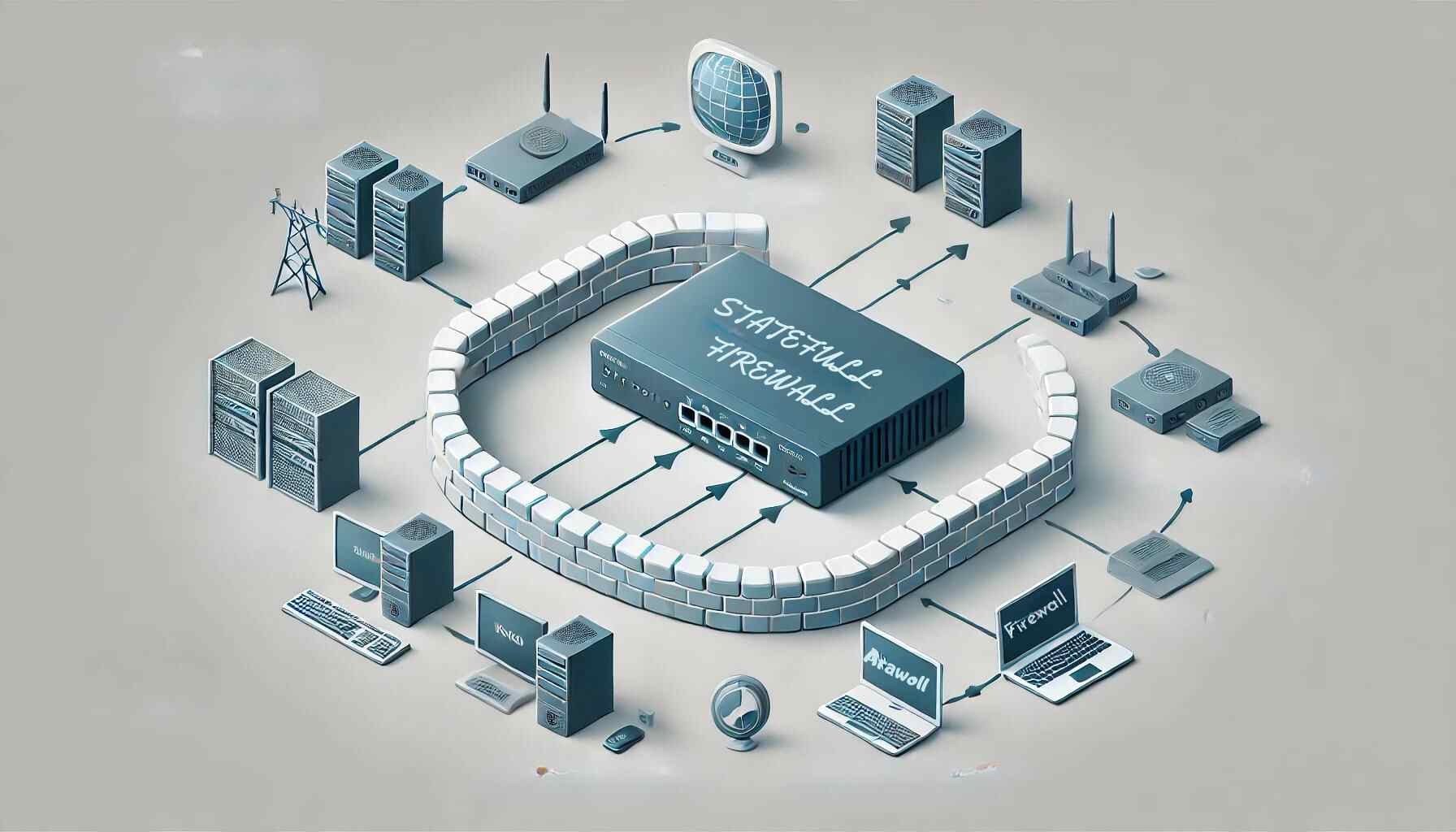What Is a Stateful Firewall: A Detailed Guide
Table of content
Introduction:
A stateful firewall is defined as the most immediate status of a process application. It is designed to keep track of the state of active connections passing through it. Unlike stateless firewalls, which treat each packet in isolation, stateful firewalls maintain a comprehensive state table that records vital information about each connection. This includes details, such as source and destination IP address ports, sequence numbers, and the connection’s state (newly established, terminating). This stateful inspection enables the firewall to allow or block traffic based on the notably advanced security capabilities.
What Is a Stateful Firewall:
A stateful firewall is a kind of security, better to say, firewall, which monitors the state of active network connection and keeps track. Located at Layer 3 and 4 of the OSI (Open Systems Interconnection) model, it analyzes incoming traffic and ensures no security threat.
Some of the most common features of a stateful firewall include analyzing and blocking unauthentic traffic and eliminating security risks, keeping a record of active connections, and identifying security threats on the spot.
Key Features of a Stateful Firewall:

Here are some key features and concepts:
Stateful Inspection: Unlike stateless firewalls, which only analyze individual packets, stateful firewalls keep track of the state of active connections. They examine the characteristics of the traffic and maintain a state table that tracks each connection.
Connection Tracking: The firewall tracks the state of a connection and makes decisions based on that state. For example, it will allow packets that are part of an established connection but block others.
Security: Stateful firewalls provide better security than stateless firewalls by understanding the state and context of network traffic. They can detect and block various types of attacks, such as SYN floods and other DoS (Denial Of Service) attacks.
Performance: Stateful inspection can be resource-intensive, requiring more processing power and memory to maintain the state table, especially in high-traffic environments.
How Does a Stateful Firewall Work:

A stateful firewall collects data going through each connection. All of these data points are from profiles of “safe” connections. When a subsequent connection is attempted, it is checked against the list of attributes collected by the stateful firewall. If it has the qualities of a safe connection, it is allowed to occur. If not, the data packets are discarded. Data packets contain information about the data within them. A stateful firewall performs packet inspection to check if the packet poses threats.
Advantages of Stateful Firewalls:
Detection of Illicit Data Use:
Stateful firewalls can identify when malicious data is used to infiltrate the network, enhancing security.
Logging and Storing network connections:
They can log and store significant aspects of network connections, providing valuable data for analysis and future reference.
Behavioral logging for attack prevention:
By logging the behavior attacks, stateful firewalls can use that information to better prevent future attempts. They can automatically deter specific cyber attacks once, encountered without the need for updates.
Learning from past events:
Stateful firewalls learn from past events, enabling them to make protection decisions based on historical data. This capability makes them a powerful unified threat management (UTM) solution, performing multiple security functions in a single device.
Conclusion:
Stateful firewalls are a crucial element in modern network security due to their ability to maintain and analyze the state of active connections. By leveraging stateful inspection and contextual intelligence, these firewalls provide superior protection against various types of cyber threats compared to their stateless counterparts. We have discussed some crucial aspects in the present blog and provided authentic and study-driven information. If you are interested in exploring further topics like Managed Firewall, WAN vs LAN, or want to check out networking accessories such as routers, switches, and firewalls, you can visit Buyrouterswitch.
Frequently Asked Questions:
What is a stateful firewall?
A stateful firewall monitors active network connections and makes decisions based on the traffic’s context using stateful inspection.
How does a stateful firewall differ from a stateless firewall?
Stateful firewalls track the state of active connections and make decisions based on the state of active connections and the context of the traffic, while stateless firewalls treat each packet indecently without considering the state of the connection.
What is the role of dynamic rules in a stateful firewall?
Dynamic rules allow the firewall to adapt its filtering criteria based on the state of active connections, this enables more flexible and context-aware security policies.
What is a stateful firewall on a Mac?
A stateful firewall analyzes incoming traffic, searches for possible threats to traffic and data, and tracks and monitors the status of current network connections. A stateful firewall on Mac works in the same way.




 Catalog
Catalog



















































































































 (800) 870-9487
(800) 870-9487